How to Grow an Avocado Tree
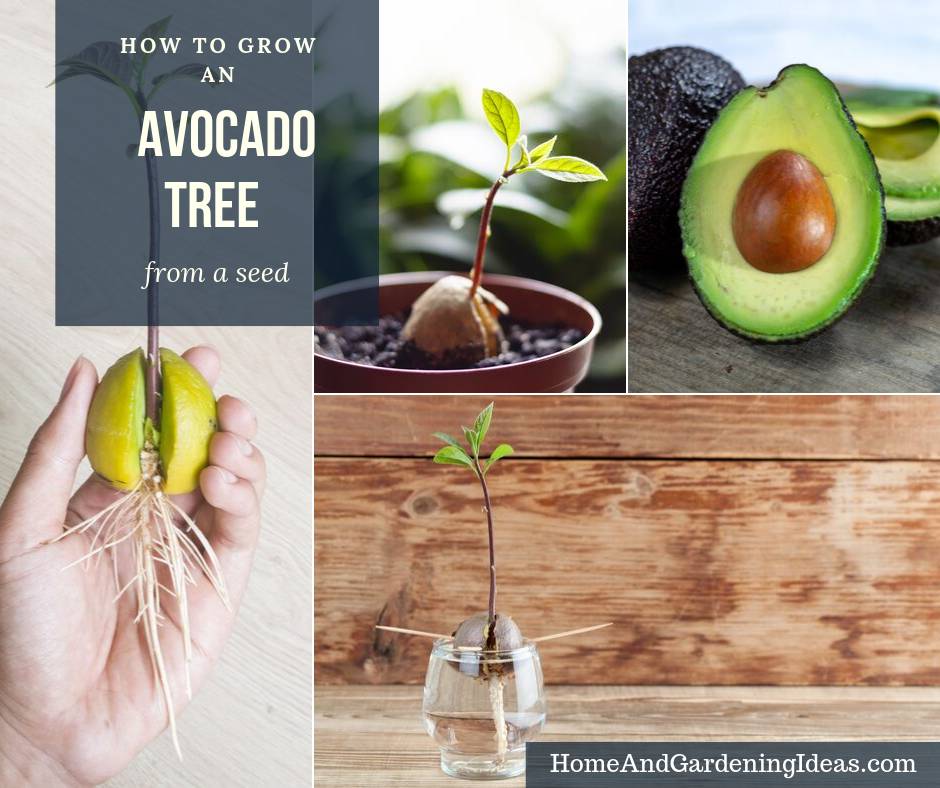
Avocado is a popular fruit which can be integrated into numerous traditional meals, snacks, desserts and salads. Some avocado lovers have even claimed that Avocado is a fruit that makes every food taste better. Apart from its positive popularity, Avocado is also a nutrient-rich fruit containing Vitamin K, C, B5, B6, E, Folate and Potassium in large quantities for every scoop as well as other nutrients like iron, zinc, phosphorus, magnesium, and vitamin A in smaller quantities. If you’re a lover of Avocado or you’re just someone who takes it once in a while and you have some space on your property, you can use the opportunity to grow one or two Avocado trees.
By following the right instructions, you can easily grow avocado tree(s). However, it’s best for you to know that even if your Avocado plant manages to grow successfully unharmed, there’s always the likelihood that it will not produce fruits at all, and it may take many years for a lucky homegrown Avocado tree to produce fruits. The truth is that commercial Avocado growers have a lot of grafting methods that they use to ensure that the avocados they grow produce fruit and many home growers don’t have the knowledge or even the understanding of these grafting methods. So explore the following procedure on how to successfully plant the best Avocado tree.
The Avocado Pit: Avocado Seed
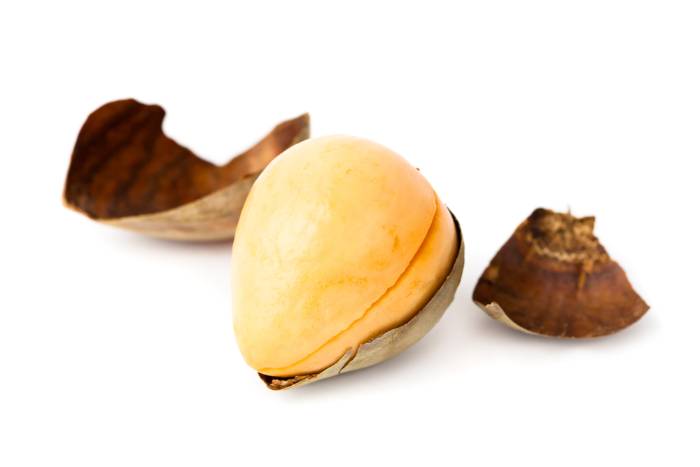
In order to grow an Avocado tree, you need an Avocado pit, also referred to as the Avocado seed, contained at the center of the Avocado fruit. You need the Avocado seed to be in good condition so that it can viable for germination. For the Avocado pit to actually grow, there are some precautions you need to take.
In order to avoid cutting into the avocado pit, it’s best to stop your knife or any other sharp object you’re using to removing the flesh from your chosen Avocado fruit, a layer or two before the avocado pit. Then use your two hands to pull apart in opposite directions the two halves of the Avocado that your knife have already outlined so that all that would be left secured would be the Avocado pit.
Afterwards, you can wash the Avocado pit carefully with water to remove all of the remaining Avocado flesh that may be left. It’s best to make sure that during cutting and washing the light brown seed cover does not slough off and it is kept intact in order to keep the seed viable.
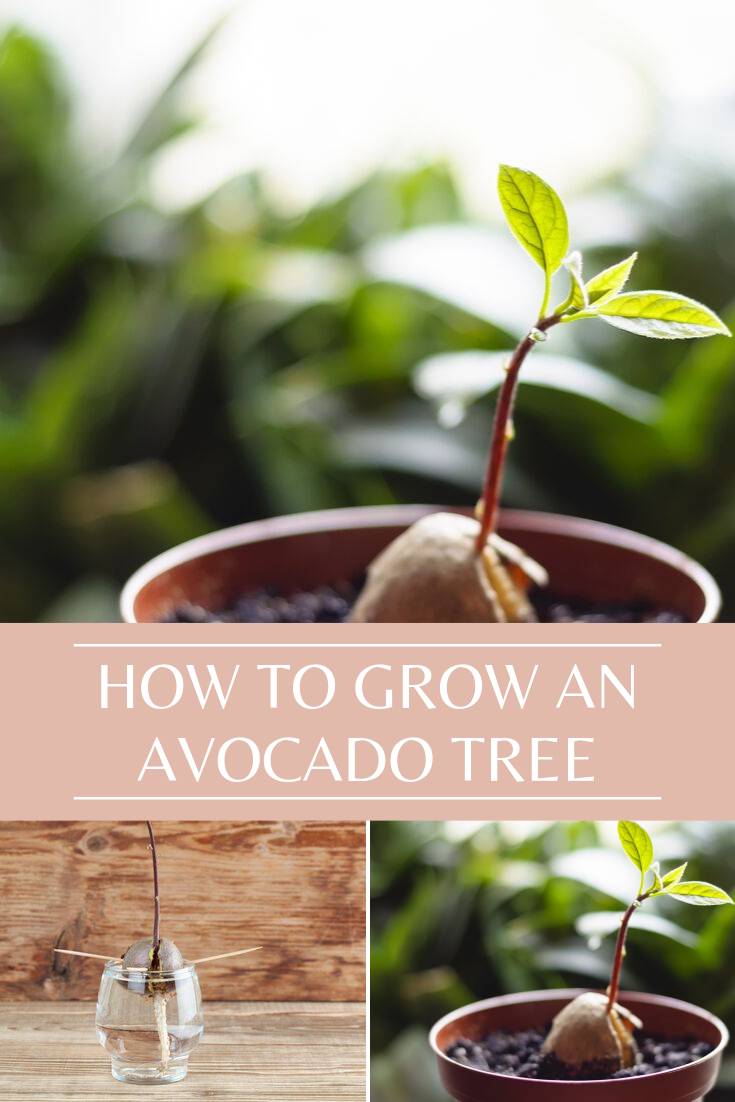
The Most Popular Method of Growing an Avocado Plant
After carefully preparing the pit, you can fill a jar or glass cup with water till the water is almost reaching the brim of the jar. Then insert 3-4 toothpicks around the pit and hold the broad end of the pit pointing down into the water. Let the toothpick hold the avocado pit at the rim of the jar such that only about an inch of broad end facing the water is submerged in the water.
Then place the jar or glass cup of water in a sun spot such as your window sill. You’ll need to change the water regularly (every five to seven days) during the first two to eight weeks during which the pit is expected to sprout its roots and a stem. If no roots or stem has appeared after eight weeks, it’s best to try again with another pit. During those 2-8 weeks, the top of your Avocado pit which is not submerged in water will dry up until there is a crack there and it will slowly shed its outer brown skin. At the bottom of the Avocado pit submerged in water, a taproot will emerge slowly and as it grows, a small sprout (the stem) will grow from the top of the Avocado pit. Make sure that taproot is never allowed to dry out or it won’t grow.
When the stem is 6 to 7 inches tall, you’ll need to cut about three inches off in order to promote its growth. Once the 6 to 7 inches of the stem grows out again, it’s time for the sprouting pit to be planted in rich humus soil. However, while planting the seed, you’re still going to leave the pit partially exposed. And now is the time when the avocado plant needs the sun more than ever. When watering your new Avocado plant, you should make sure that the soil is moist but not saturated. If your plant turns yellow, you’ve been watering it too much. To reverse the situation, it’s best to leave it to dry out for two to three days. You can encourage the bushiness of your Avocado tree by pinching the two top leaves with every extra 6-inch growth once the plant is 12 inches tall so that more leaves will grow.
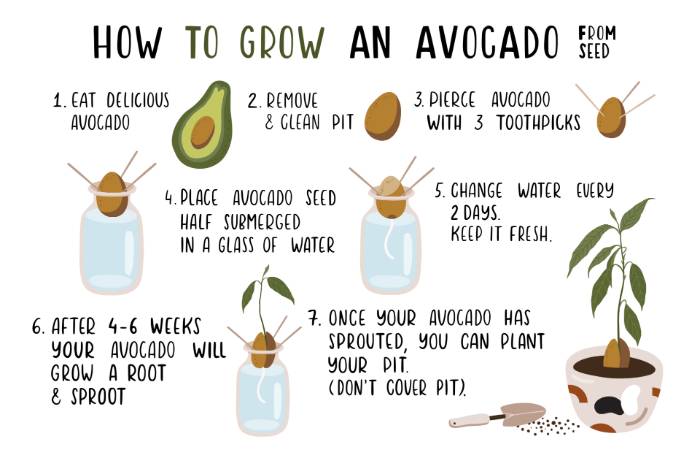
The Second Method of Growing an Avocado Plant
- After securing the Avocado pit, this method requires you to wrap the pit in a sheet of damp flannel cloth or paper towel. The paper towel should be damp but not dripping wet.
- Place the wrapped Avocado pit in a plastic food bag (don’t close it) and keep it in a dark cupboard for a few weeks while you make sure you check on it every 4-5 days.
- During this few weeks, you must remember to keep the towel wrapping the Avocado seed moist. Soon the pit will crack open and the taproot (s) will grow out.
- When the root is 3 inches long, you can then plant your growing Avocado plant in a flower pot.
From Plant to Young Tree
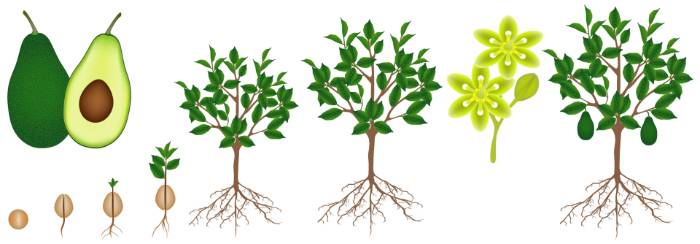
To allow your plant to grow into a young tree, avoid cold temperatures. During the winter or fall, when the sun is not shinning or when the temperature lowers below 50-60 F, it’s best to let the pot in which your Avocado plant is growing stay inside. When it’s time to transfer your Avocado plant to the ground, you should choose a location protected from wind and frost with full reach of the sun. Avocado trees like soil with a 6 to 6.5 pH level, so it’s best to find a place with soil like this. While transplanting, be careful with the sensitive roots of the Avocado and keep it in a bulk of soil. It’s best to also elevate the tree in a mound for better drainage and aeration.
During the earlier period of your Avocado tree’s growth, make sure to water it 2-3 times every week for the first year but when its roots become established after a year and some months, you can reduce your watering to once a week. You will need to fertilize and mulch your Avocado tree as it grows. Mulching can be done with cocoa bean husks or shredded tree bark or any other coarse yare mulch that can leach needed nutrients into the soil. You also need to fertilize the Avocado tree with nitrogen every year, up to a pound per year is usually adequate.
Remember I mentioned that your Avocado tree may not grow any fruit, yet I will advise you now not to be impatient with the tree because most of them take between 8 and 20 years before bringing out fruits. Also, to increase the chances of getting fruits, you can plant more than one Avocado tree so as to increase chances of pollination. So what are you waiting for? Make the cultivation of Avocado tree a long term adventure.
 Home and Gardening Ideas At home and Gardening ideas we believe inspiring readers about homesteading, self sufficiency
Home and Gardening Ideas At home and Gardening ideas we believe inspiring readers about homesteading, self sufficiency





